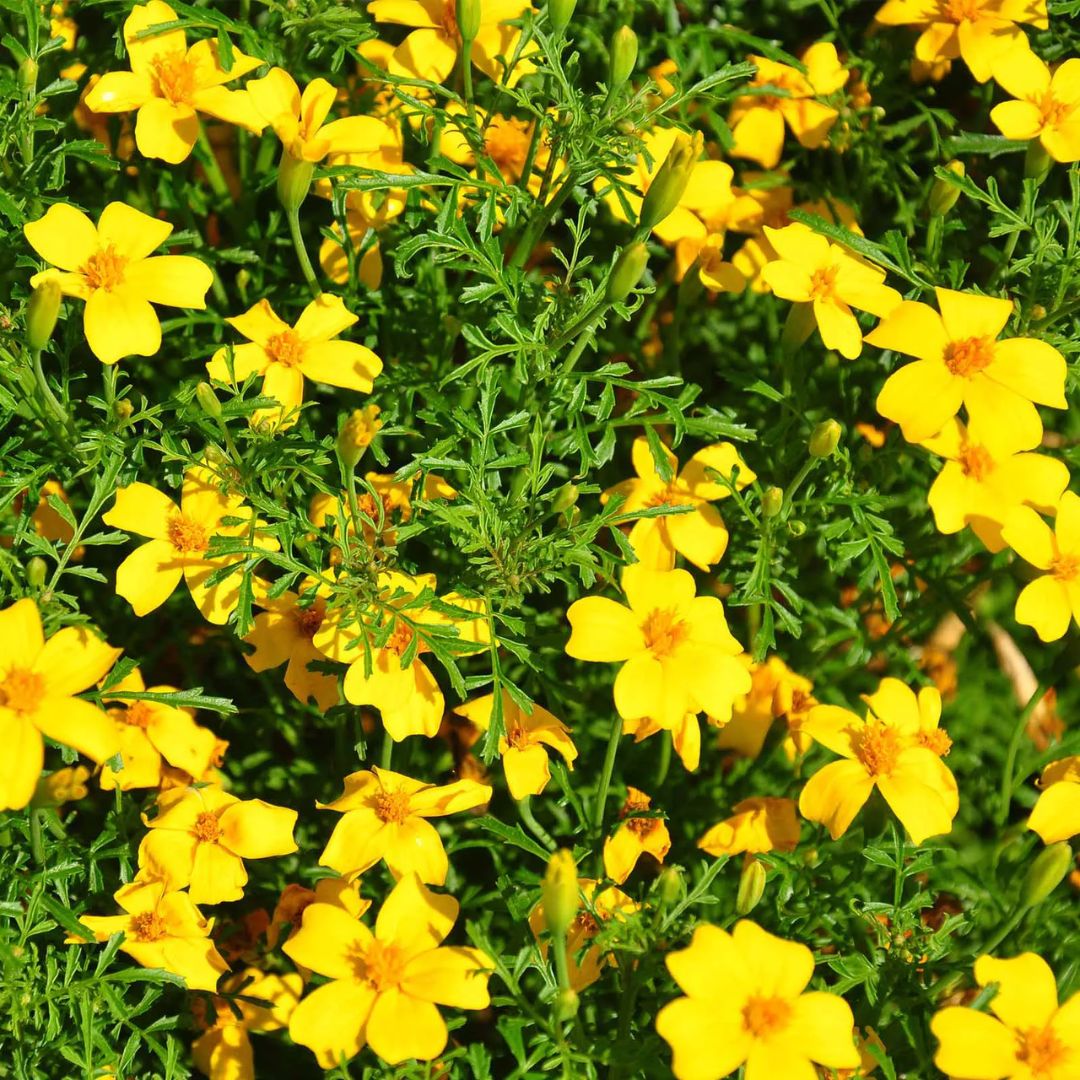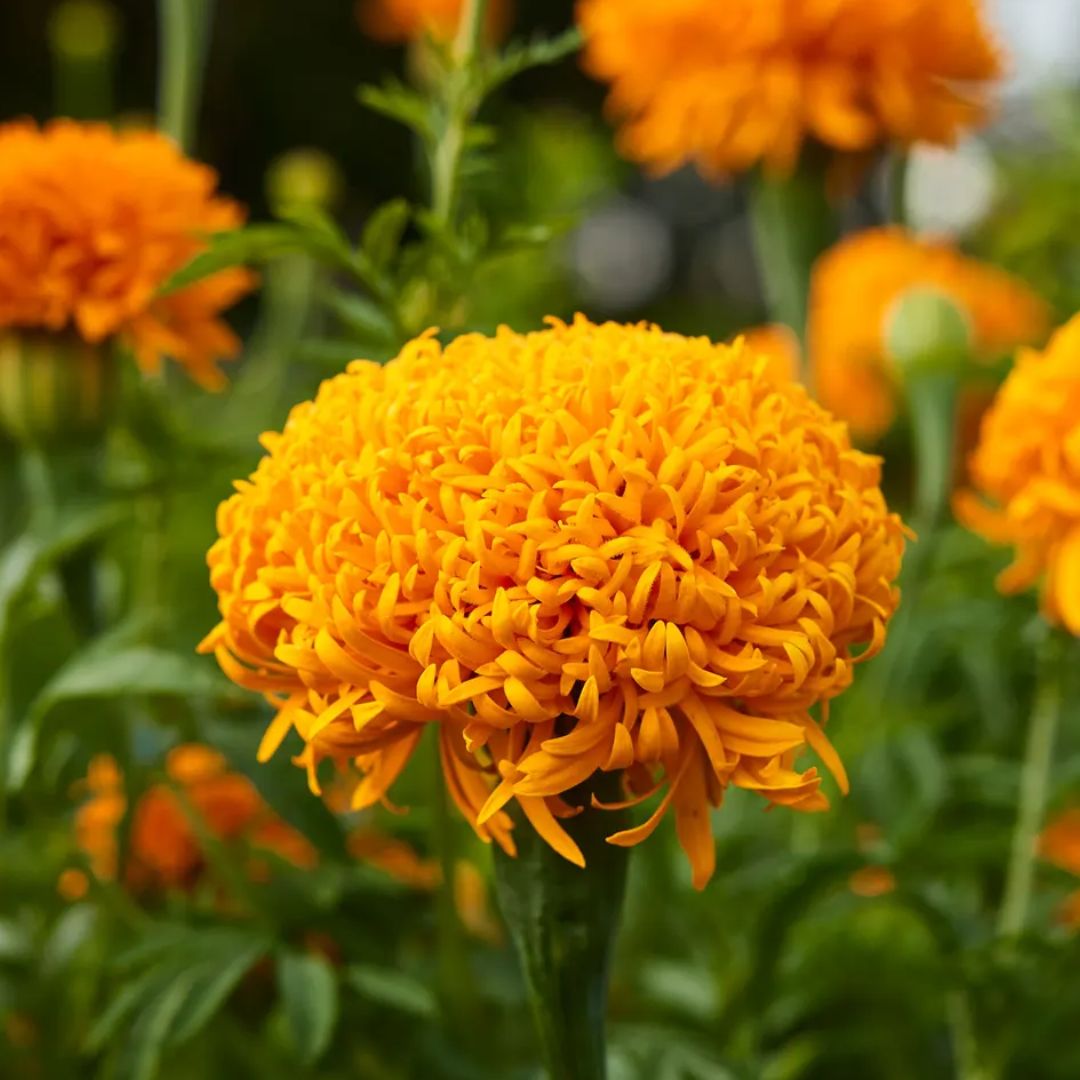How to Grow Marigolds — Welcome These Edible Blooms Into Your Yard for Elegance and Sweet Smells
Eccentric, bold and beautiful, planting marigolds will certainty elevate your backyard this season. If you want to add these beauties to your flower beds, here is everything you need to know


Colorful, mesmerizing and full of grace — marigolds, also known as Tagetes in the plant world, are a staple summer bloom native to subtropical areas of America. Depending on the type, marigolds can grow anywhere from 5 inches to 3 or 4 feet tall and make a great addition to flower beds and garden containers.
These flowers that bloom in the summer will certainly add character and bright foliage to your backyard. Easy to care for and grow, marigolds are ideal if you're in need of some low maintenance blooms. Gardening expert and owner of Breemar Flower Farm, Nicole Dillion tells us: 'Marigolds are the powerhouse of the summer garden. They are extremely heat tolerant and will bloom from Spring through frost as long as you deadhead them'.
If you're looking to introduce these blossoms into your backyard, you'll need to understand how to grow and take care of them. Here's everything you need to know — according to a gardening expert.
How to grow marigolds

Known as one of the best edible flowers to grow in your yard, marigolds are truly a touch of beauty, scent and allure. Most marigold varieties are considered annuals, while others are considered perennials. They grow in hardiness zones 2-11.
Here's how you can sow these seeds directly into soil:
1. Find a spot with lots of light
2. Marigolds love lots of light and need it to germinate. Sow seeds directly onto the surface of the soil — keeping a 2 inch gap between each one
3. Firmly compress seeds into soil, not covering too much of the seed
4. Water the area to keep soil evenly moist
So, If you're looking to add these sun-loving blooms into your backyard, the best time to do this would be in the spring, after the last frost date. 'Marigolds grow best in a full sun location and they thrive in the heat. They need a minimum of 6 hours of sunlight per day. They prefer well-drained soil and don’t like wet feet,' says Nicole. 'They can tolerate poor soil quality and do not require a lot of fertilizer. In fact, too much fertilizer will result in lots of foliage with few flowers'.
The Livingetc newsletters are your inside source for what’s shaping interiors now - and what’s next. Discover trend forecasts, smart style ideas, and curated shopping inspiration that brings design to life. Subscribe today and stay ahead of the curve.
The gardening expert says a general-purpose, slow-release fertilizer at planting should be enough to sustain these plants for the season. If you are looking to plant these blooms from seed, Nicole says you should 'space them according to the plant label or seed packet. They all have different spacing requirements depending on the type you are growing. They can be started from seed 4-6 weeks before your last frost date or can be directly sown in the garden'.
Not to worry though, marigolds are flowers you can still plant in summer! Nicole says 'Marigolds mature in 70-90 days so you still have plenty of time to grow them this season'.

Nicole Dillon is a micro-flower farmer and owner of Breemar Flower Farm based in Ashland, VA. With a profound love for gardening, Nicole has transformed a passion for nurturing plants into a thriving business. Specializing in growing peonies and cut flowers, Nicole shares her expertise through a weekly blog aimed at home gardeners. Her mission is to inspire and educate gardeners of all levels, helping them create beautiful, sustainable spaces. Nicole also volunteers as a master gardener in her hometown.
What are the different types of marigolds?
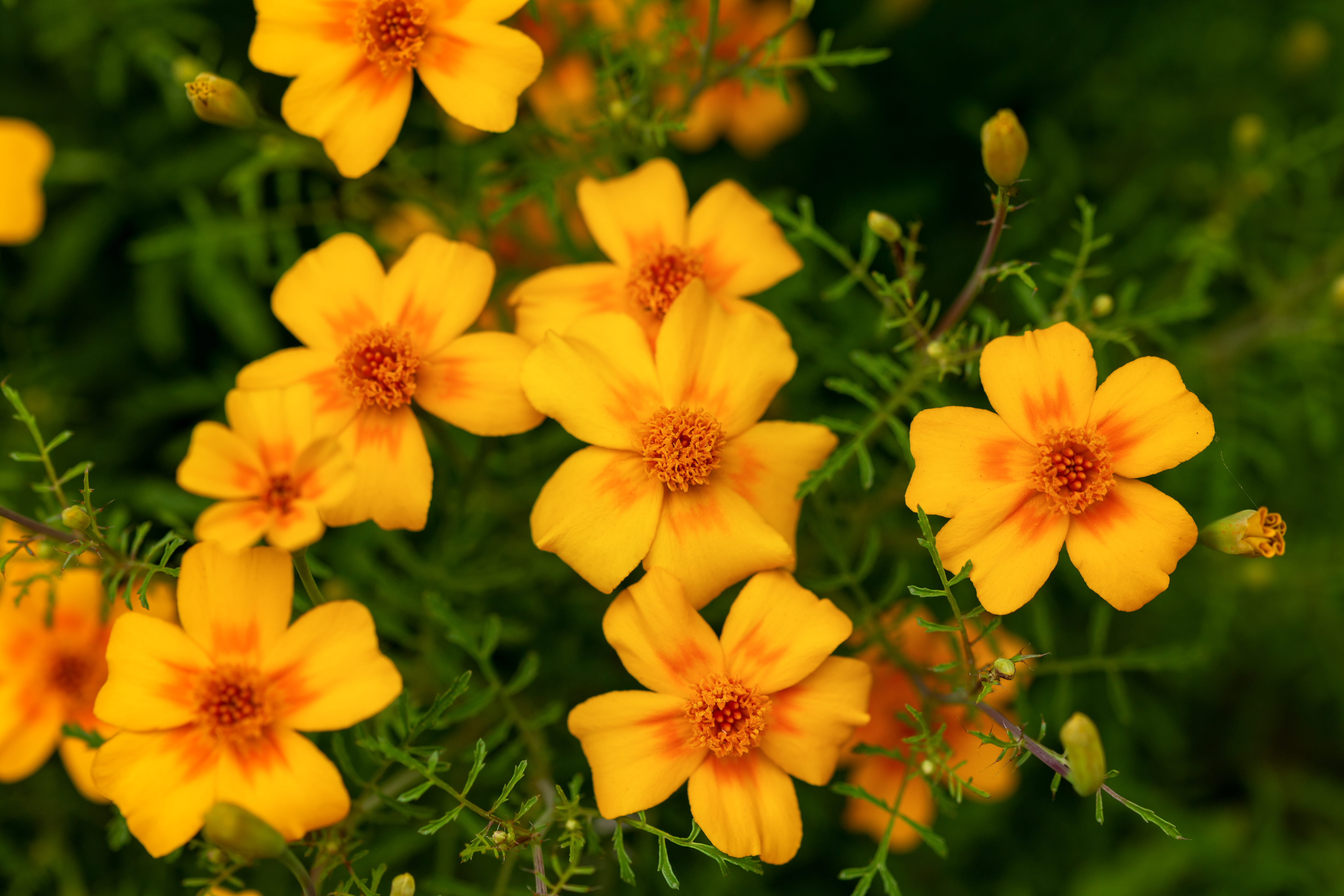
For all your modern garden ideas there are over 50 species of marigold out there but there are four that have become quite popular over the years. Gardening expert Nicole tells us: 'Marigolds can get a bad reputation because of their smell. People love it or hate it. The good news is that this scent helps deter pests in the garden and if you choose to grow marigolds for cutting, simply remove the foliage, and the scent is gone. Whiteflies and a number of other insects in addition to nematodes avoid them making them a great crop to interplant in your vegetable garden. They are also known to be deer and rabbit-resistant'.
Here are the top 4 marigolds you need in your backyard this season.
African or Aztec Marigolds (Tagetes erecta): 'Despite their name, African Marigold, they are native to the Americas,' says Nicole. 'This type of marigold is naturally much taller than other marigold types topping out at around 3 feet. They keep pumping out blooms all summer long as long as you keep cutting them'. The expert says these blooms are 'the perfect filler flower for bouquets. They come in orange, yellow, and white'. Nicole's favorite varieties for cutting are: the CoCo series, Giant series, and White Swan.
French Marigolds (Tagetes patula): Known to be more compact and bushier than African marigolds, these blooms can grow between 6 to 12 inches tall. Nicole says this variety is 'smaller and often consist of a blend of colors including red, orange, and yellow. They are great for edging, containers, and mass plantings. They are a little more tolerant of wet conditions than African marigolds'.
Signet Marigolds (Tagetes tenuifolia): Easy to grow and low maintenance, the signet marigold is the smallest variety within the marigold family. Nicole tells us: 'I was introduced to these last year at my local botanical garden and fell in love with this lovely summer ground cover. They produce mounds of lacey foliage and dainty flowers in summer hues'. The expert says these blooms are ideal for walkways, in window boxes, as a groundcover and container gardening.
Triploid Marigolds (Hybrid Marigolds): Triploid Marigolds is a hybrid marigold of a African Marigold and a French Marigold. 'This results in a dwarf plant with large blooms like the African marigold, but a short stature like the French marigold,' Nicole explains. 'These marigolds are easily found in your local garden center or big box store. I grow dwarf marigolds in my vertical GreenStalk planter and they are thriving. These plants do not set seed so you don’t have to worry about deadheading as much to keep the flowers coming'. These blooms can also take on the heat as well as rainy conditions.
How to care for marigolds

For a low maintenance garden, marigolds are truly a game-changer. In order to take care of these blooms, the professional gardener says you need to do the following:
• Water your marigolds
• Make sure they have a good amount of sunlight
• Deadhead your flowers
• Harvest seeds for following year
Nicole says to get the best out of your marigolds, you will need to, 'deeply water them a few times a week and allow time for the soil to dry out between waterings. Deadhead the blooms to encourage them to keep blooming'. During the hottest part of summer, the expert says the blooms may stall, but 'don’t be dismayed if they do, they will come back strong for beautiful fall blooms in the best fall colors'.
She continues: 'At the end of the season, let the blooms brown up. Remove the spent blooms, open them up, and harvest the seeds for next year — not for Triploid marigolds as they are sterile — keep harvested seeds in a cool, dry place for the best viability'.
What are the common problems with marigolds?
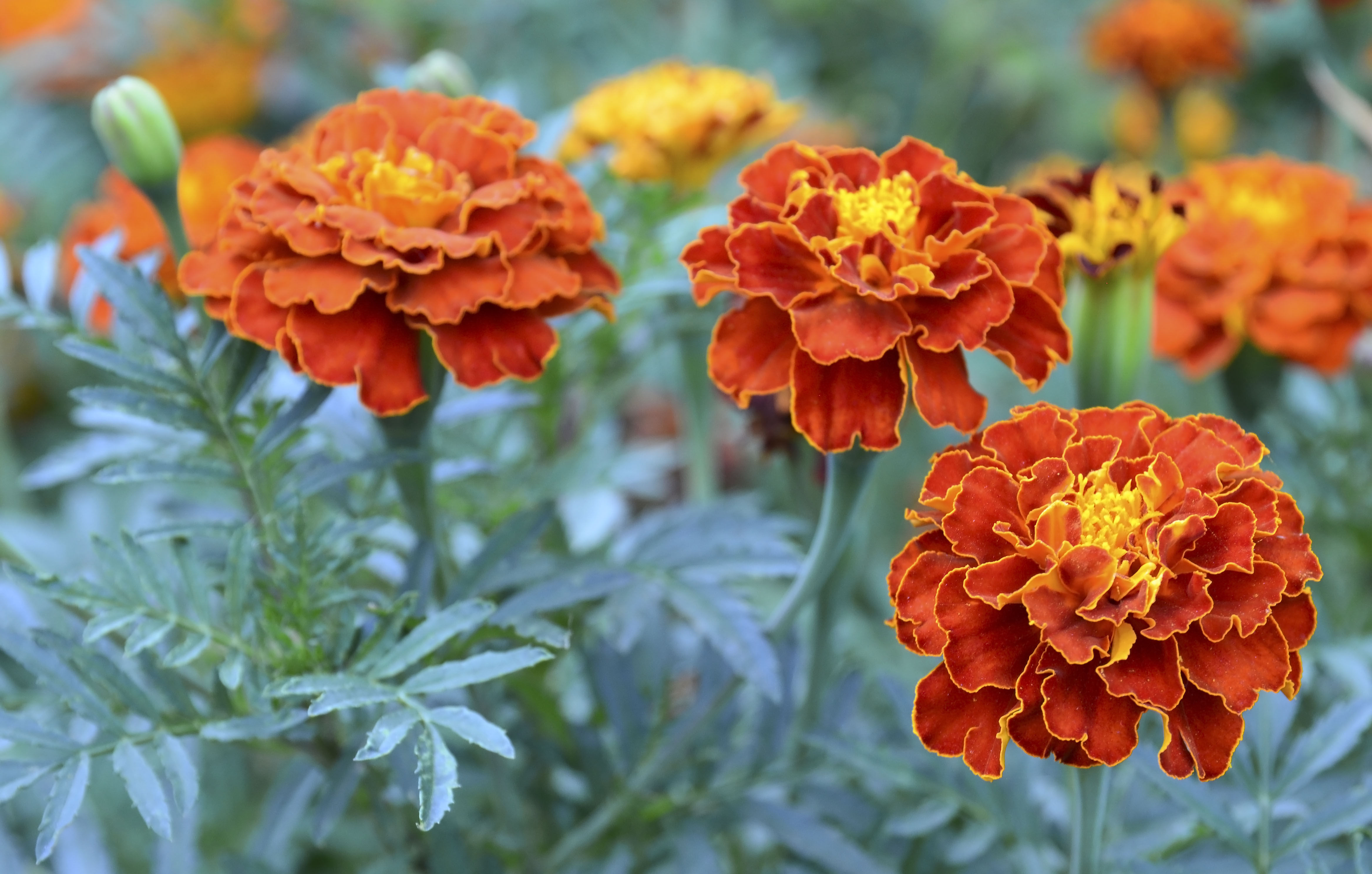
There are many home remedies for dying plants, but when taking care of your beloved shrubs, it's important to understand what may be the underlying issue for damage or root rot.
But Nicole tells us, 'marigolds are generally low-maintenance plants and have few problems,' however, they are susceptible to root rot. For this, the expert says you need to ensure the blooms have been placed in well-drained soil and you need to avoid overwatering.
'When they are not in a full sun location, marigolds are prone to powdery mildew. Spider mites can also be a problem so watch for fine webbing and treat with insecticidal soap as needed,' Nicole adds.
FAQS
How do you deadhead marigolds?
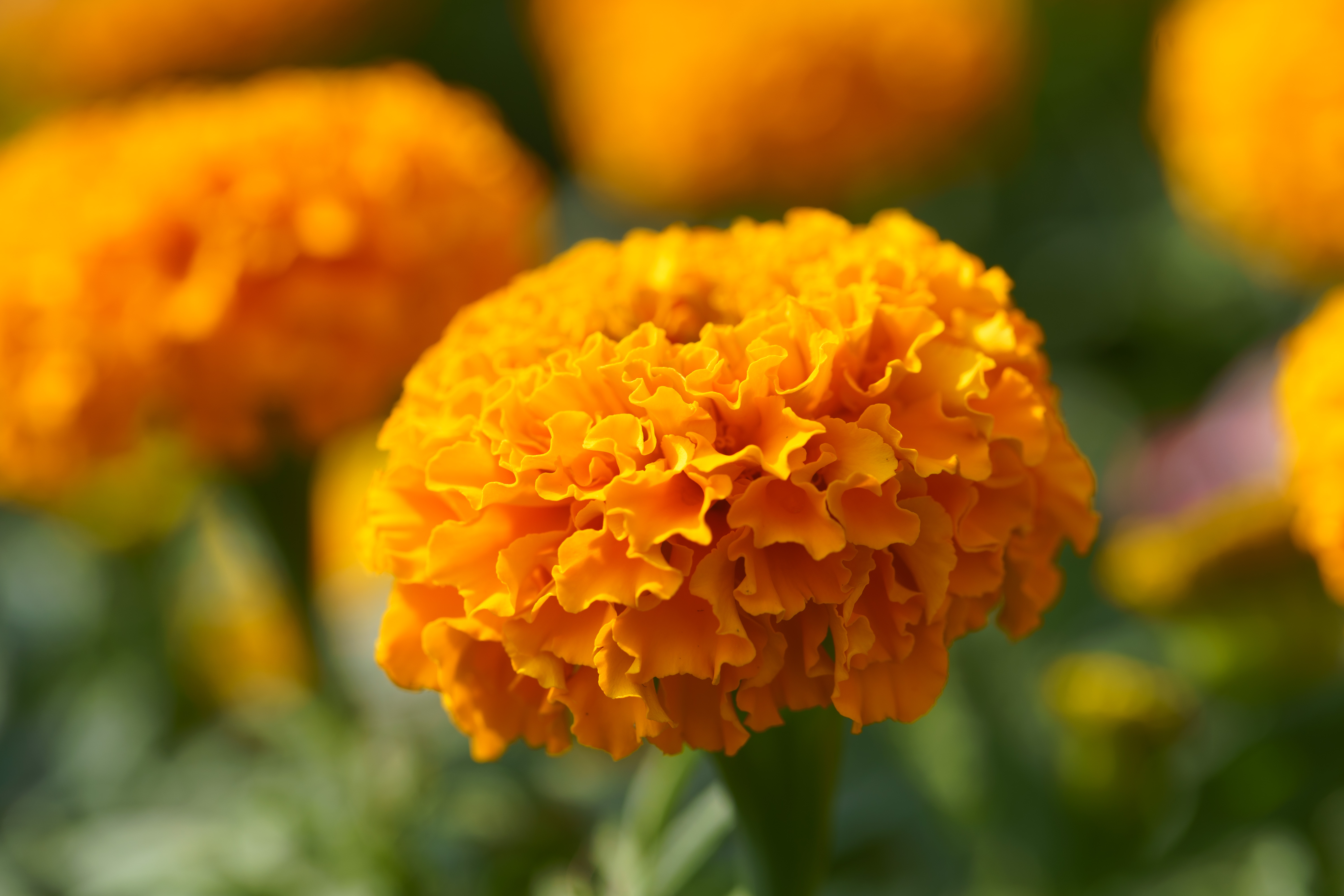
You'll need the right pruning tools when tidying up your plants. Bypass pruners are the best option if you are looking to deadhead your blooms as these two sharp blades will provide a clean and precise cut. Here are a few simple steps on how you can prune your marigolds.
1. Check to see which areas of the plant is damaged, diseased or dead
2. Once you've spotted the area that needs pruning, gently snip it off with a clean cut (Yes it's as simply as that!)

Faiza is the Renovation Editor at Livingetc. She previously worked for The Independent as a News Feature Writer, where she crafted lifestyle, entertainment, and news stories. She also worked as an Audience Editor for the newspaper for almost two years. Thriving in the busy newsroom, Faiza also spent her time crafting stories for Sky News as an SEO reporter, where she produced stories based on trending topics. Lifestyle and interior design have been areas of interest for her for some time, and as she advances in this field, she will continue to refine her skills in all aspects of design. Faiza has a background in SEO, social media, and reporting. Her passion for writing goes beyond her work as she loves all things poetry and creative writing.

